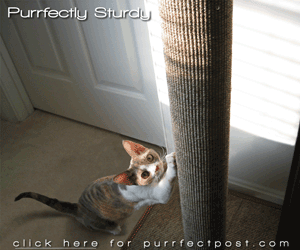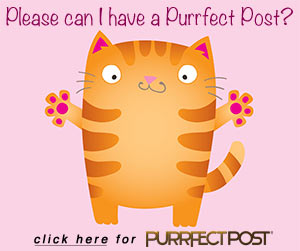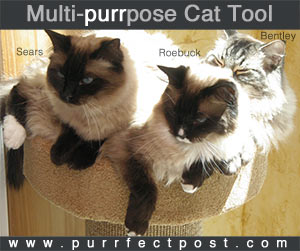October Hazards for Cats: A Seasonal Safety Guide
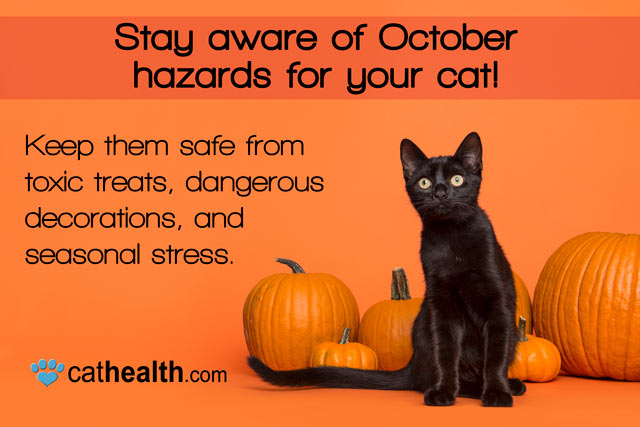
As the leaves change and the weather cools, October brings festivities like Halloween, seasonal decorations, and cozy fall foods. While this time of year can be enjoyable, it also presents some unique hazards for our feline friends. Understanding these risks is key to keeping cats safe throughout the season.
Halloween Decorations and Costumes
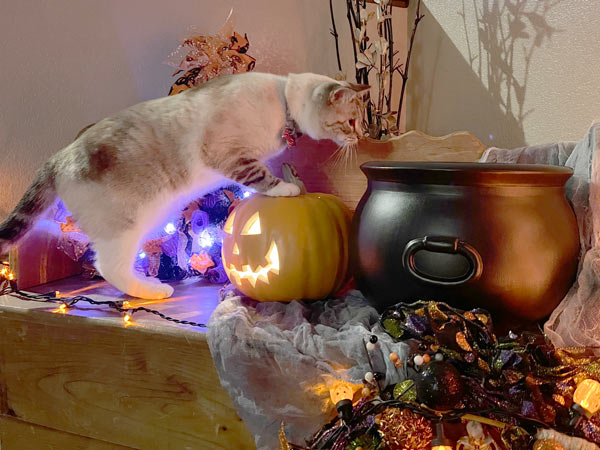
Decorating for Halloween can be fun, but many of the items we use around the house can be hazardous for cats:
- Tangled in Cobwebs: Fake cobwebs, while spooky, can trap a cat's paws or claws, and if ingested, can lead to serious digestive issues.
- String Lights: Cats are naturally curious about dangling objects. Chewing or playing with electrical cords can result in shocks, burns, or even fires.
- Small Parts: Decorations often include small pieces like plastic spiders, beads, or other tiny objects that cats might swallow, leading to choking hazards or intestinal blockages.
Make sure any decorations that could attract a cat's attention are kept out of reach, and always supervise your pet around seasonal decor.
Cat Costumes
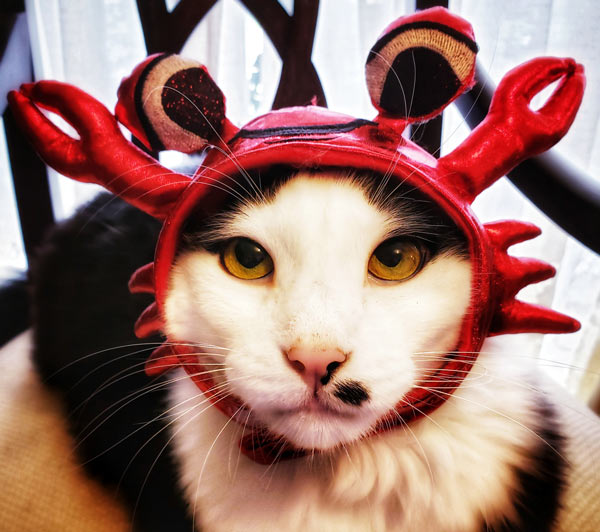
While dressing cats in costumes can be tempting for Halloween fun, it's important to keep your cat's comfort and safety in mind:
- Restrictive or Uncomfortable Outfits: Costumes that restrict movement, breathing, or vision can cause distress. Cats are generally sensitive to anything that feels unnatural on their bodies.
- Loose Parts or Strings: Costumes with small parts, buttons, or strings can pose choking hazards or get caught on objects, potentially injuring your cat.
- Stress and Anxiety: Some cats become highly stressed when wearing costumes. If your cat shows signs of discomfort—such as freezing, trying to remove the costume, or hiding—it's best to remove the outfit immediately.
If you do decide to dress your cat, make sure the costume is lightweight, non-restrictive, and doesn't have any small parts that could be swallowed. Always supervise your cat while they are wearing any costume.
Fun Alternatives: Catnip Toys
Instead of dressing up your cat, consider getting them some fun, Halloween-themed catnip toys to celebrate the season without any stress. Some great options include:
- Yeowww!-lloween Organic Catnip Toy: A cute, fun, and durable festive toy filled with 100% organic catnip that your cat will love. Purrfect for hours of playful entertainment! Check it out here.
- La CAT-rina Large Organic Catnip Toy: A vibrant, festive Día de los Muertos-inspired toy. This colorful, skull-shaped catnip toy features durable cotton twill on the front and a soft, fuzzy back, perfect for both play and relaxation. Its artistic and unique design makes it visually appealing to humans, making it the perfect gift for a stylish cat lover. Measures over 5 inches tall. Check it out!
These toys not only provide seasonal fun for your cat, but they also double as adorable decorations that humans will enjoy just as much! It's a win-win for both you and your feline friend.
2. Candles and Jack-o'-Lanterns
A glowing jack-o'-lantern is a Halloween tradition, but candles and open flames are dangerous for cats:
- Knocking Over Candles: Cats may be tempted to swat at flickering flames, which could result in knocked-over candles, causing burns or fires.
- Burns: Cats that get too close to an open flame can burn their fur, whiskers, or paws.
To avoid accidents, consider using battery-operated candles or LED lights inside pumpkins and other decorations.
3. Toxic Halloween Treats
Halloween often means lots of candy and treats, but many of these can be harmful or toxic to cats. While it's true that cats lack taste receptors for sweetness and can't taste sugary flavors, they might still be attracted to Halloween treats for other reasons:
- Chocolate: Chocolate is toxic to cats due to theobromine, even in small quantities. Symptoms of chocolate poisoning can include vomiting, diarrhea, rapid heart rate, and in severe cases, seizures or death.
- Xylitol: This artificial sweetener, often found in candy, gum, and baked goods, is highly toxic to cats and can cause hypoglycemia (low blood sugar) and liver damage.
- Fats and Other Ingredients: Cats may be drawn to the smell of fats or dairy products used in candies and baked goods, which could lead them to investigate or try to eat them. Even small amounts of these ingredients can cause digestive upset.
- Wrappers: Cats might also be tempted to play with or eat candy wrappers due to their crinkly texture and smell, which can lead to choking or blockages in the digestive tract.
Make sure all candy is stored safely out of your cat's reach, and be sure to dispose of wrappers in a secure trash bin to avoid any potential accidents.
4. Pumpkin and Other Fall Foods
While plain, cooked pumpkin can be healthy for cats in small amounts, there are important considerations, especially for cats with certain health conditions:
- Raw Pumpkin: Cats may have difficulty digesting raw pumpkin or its seeds, which can lead to stomach upset.
- Spiced or Sweetened Pumpkin: Many fall foods, such as pumpkin pies or lattes, contain sugar, spices, or artificial sweeteners that are not safe for cats.
- Canned Pumpkin: While plain, unsweetened canned pumpkin can provide digestive benefits for some cats, it is high in potassium and phosphorus. This can be harmful for cats with renal (kidney) disease or heart disease, as these minerals can exacerbate their condition. Additionally, make sure the canned pumpkin does not contain added sodium, which can be harmful to cats, especially those with underlying health issues. Always check the label for plain pumpkin with no additives.
- Pumpkin Rind: It's important to avoid feeding your cat the rind of the pumpkin, as it is difficult to digest and can pose a choking hazard or cause digestive blockages.
If you want to treat your cat to some fall flavors, stick with small amounts of plain, cooked pumpkin, and always consider their specific health needs. Consult your veterinarian before making any changes to your cat's diet, especially if they have any pre-existing health conditions.
5. Antifreeze and Cooler Temperatures
As the weather cools, certain products used during the colder months can pose serious risks to cats:
-
Antifreeze: Antifreeze (ethylene glycol) is highly toxic to cats. Even a small amount can lead to rapid kidney failure. Cats are often drawn to antifreeze because ethylene glycol, the primary ingredient, has a taste that mimics sweetness. Even though cats lack the ability to taste sweetness the way humans do, their natural curiosity and attraction to this flavor can lead them to ingest the liquid, making antifreeze highly dangerous for them. In addition to drinking it, cats can also ingest antifreeze by licking it off their paws after walking through it, as even small amounts are enough to cause severe toxicity.
- While propylene glycol, found in pet-safe antifreeze alternatives, is less toxic than ethylene glycol, it can still be dangerous for cats if ingested in large quantities or over time, potentially causing issues such as lethargy, seizures, or damage to the central nervous system. Always store any antifreeze product securely, and clean up spills immediately.
- Rock Salt: Rock salt is commonly used to melt ice on driveways and sidewalks, but it can be harmful to cats.
- Ingesting rock salt—whether by licking it off their paws or fur—can cause symptoms like vomiting, diarrhea, drooling, or even more severe conditions like dehydration and electrolyte imbalances.
- Rock salt can irritate a cat's paws, leading to cracked, dry skin or discomfort. After your cat has been outside in areas where rock salt is used, wipe their paws clean to prevent ingestion or irritation.
Emergency Response to Suspected Poisoning
If you suspect your cat has been exposed to antifreeze, rock salt, or any other toxic substance, time is of the essence. Contact your veterinarian or the Pet Poison Helpline immediately for guidance. The helpline is available 24/7 and can be reached at (855) 764-7661.
Taking swift action can be the difference between life and death in poisoning cases, so don't hesitate to seek help immediately.
6. Outdoor Dangers
- Black Cat Superstitions: Unfortunately, black cats are sometimes targets of cruelty during the Halloween season due to old superstitions. Some shelters avoid adopting out black cats in October to protect them from harm. If you have a black cat, consider keeping them indoors during this time.
- Predators and Wildlife: As the days grow shorter, nocturnal predators such as coyotes and owls are more active, posing a risk to cats. Some wildlife, like snakes, may also become more aggressive as they prepare for hibernation.
Cats that spend time outdoors may face additional risks in October:
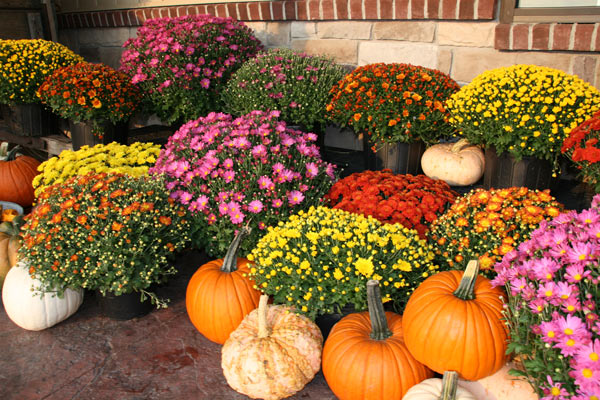
7. Toxic Plants Common in October
As fall arrives, many households bring in seasonal plants and decorations that can pose risks to cats. Some popular autumn plants, commonly used in October, can be toxic if ingested. It's important to be aware of these dangers to keep your feline companions safe.
- Chrysanthemums: Often used in fall decorations, chrysanthemums (also known as mums) are toxic to cats. If ingested, they can cause symptoms such as vomiting, diarrhea, drooling, and loss of coordination.
- Autumn Crocus: This plant blooms in the fall and can be extremely toxic to cats. Ingesting autumn crocus can cause severe gastrointestinal distress (vomiting, diarrhea), and in severe cases, respiratory failure or organ damage.
- Pumpkin and Gourd Plants: While the flesh of pumpkins is generally safe for cats, the plants themselves, particularly the leaves and stems, can cause digestive upset if consumed in large quantities.
- Corn Stalks and Decorative Corn: Corn stalks are frequently used in fall displays. While generally non-toxic, they can cause intestinal blockages if chewed or swallowed by curious cats.
- Amaryllis: Though typically associated with the winter season, some varieties of amaryllis bloom in the fall. Amaryllis is highly toxic to cats and can cause vomiting, drooling, tremors, and lethargy if consumed.
How to Keep Cats Safe:
- Avoid bringing toxic plants into your home or keep them out of reach of your cat.
- Opt for pet-safe plants when decorating for fall or use artificial plants as a safe alternative.
- If your cat shows any signs of plant poisoning, such as vomiting, drooling, or lethargy, contact your veterinarian immediately.
By being mindful of the plants you bring into your home, you can enjoy a beautiful fall season while keeping your cat safe from potential toxic dangers.
8. Stress from Halloween Activities
The excitement of Halloween can be stressful for many cats. Constant doorbell ringing, unfamiliar visitors in costumes, and general noise can cause anxiety and stress. To help your cat feel safe and comfortable during this chaotic time, it's important to create a calm environment for them.
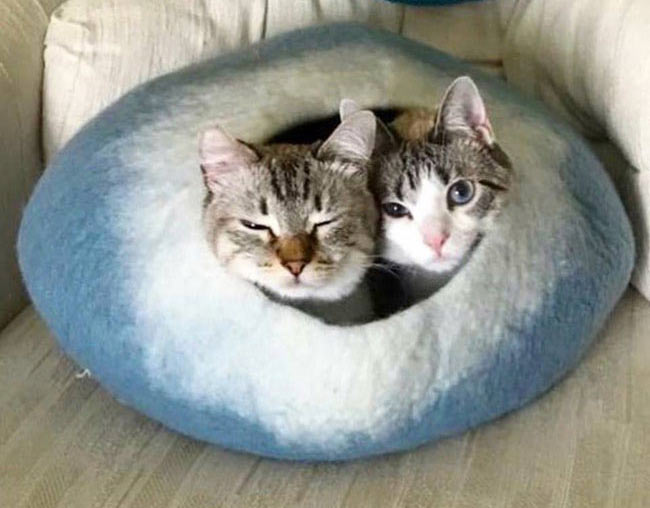
To help keep cats calm:
- Create a quiet space where they can retreat, away from the front door and the commotion of trick-or-treaters.
- Feliway Products: Consider using calming aids like Feliway pheromone diffusers, which mimic natural calming pheromones. You can also use Feliway spray on bedding or in areas where your cat may choose to hide. These products can help reduce anxiety and create a more soothing environment.
- Secluded Hiding Spot: Allow your cat to hide in a closet or another secluded, safe space. Spray the area with Feliway first to promote calm. Ensure the space has easy access to food, water, and a litter box, and prop the door open to prevent your cat from getting locked in.
-
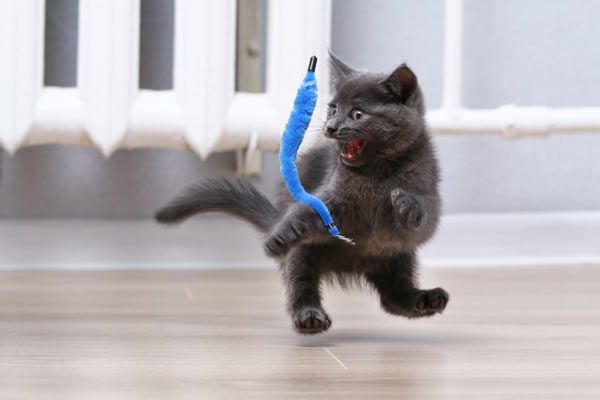 Quiet Room Setup: A separate, quiet room in a calm section of the house works well. You can add a box turned on its side to create a cozy hiding spot, or consider investing in a Cat Cave, which offers a snug and secure space that many cats enjoy. These are great for offering both comfort and a sense of security during stressful events.
Quiet Room Setup: A separate, quiet room in a calm section of the house works well. You can add a box turned on its side to create a cozy hiding spot, or consider investing in a Cat Cave, which offers a snug and secure space that many cats enjoy. These are great for offering both comfort and a sense of security during stressful events. - Interactive Play: If there's time, consider doing an interactive play session before the evening's activities. Play helps release endorphins, which can reduce stress and create positive associations with their environment.
By offering a secure, peaceful retreat and using calming tools, you can help your cat manage the stress of Halloween more comfortably.
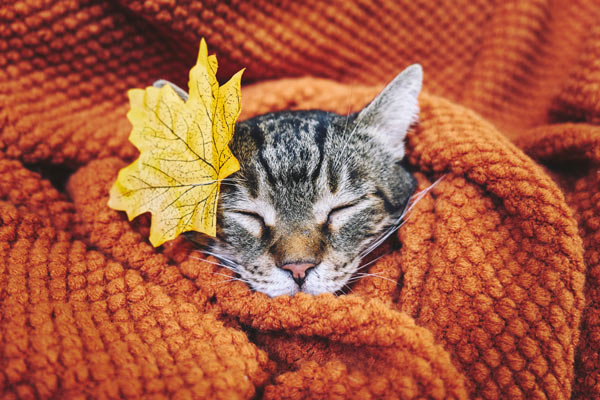
Conclusion
While October is filled with fun, it's important to be mindful of the seasonal hazards that could affect cats. From toxic treats to dangerous decorations, taking precautions can help ensure cats enjoy a safe and stress-free autumn. Along with being cautious of these hazards, create a safe, quiet space for your cat during stressful events like Halloween. Always keep an eye out for any unusual behavior, and if you suspect your cat has been exposed to a hazard, contact your veterinarian immediately.
This guide covers many common hazards, but it doesn't cover every potential risk. For poisoning concerns or unknown exposures, reach out to the Pet Poison Helpline at (855) 764-7661 for immediate assistance. With the right awareness and precautions, you and your cat can enjoy the fall season safely together!
Notice: Ask-a-Vet is an affiliated service for those who wish to speak with a veterinary professional about their pet's specific condition. Initially, a bot will ask questions to determine the general nature of your concern. Then, you will be transferred to a human. There is a charge for the service if you choose to connect to a veterinarian. Ask-a-Vet is not manned by the staff or owners of CatHealth.com, and the advice given should not delay or replace a visit to your veterinarian.


